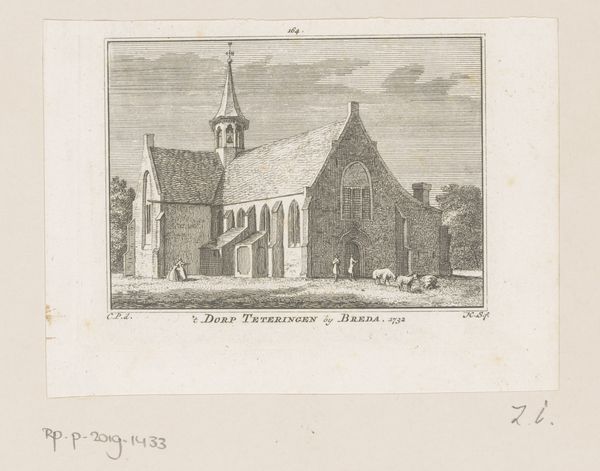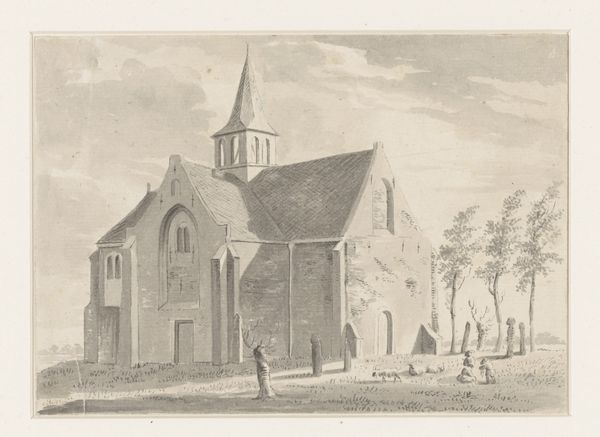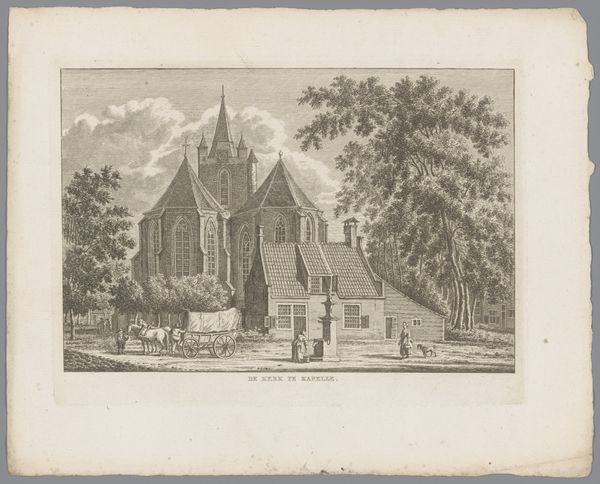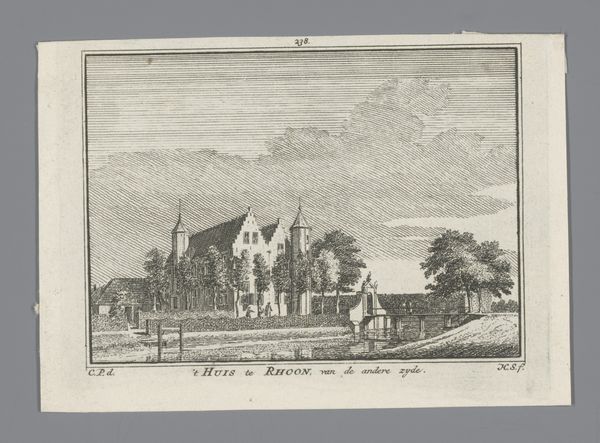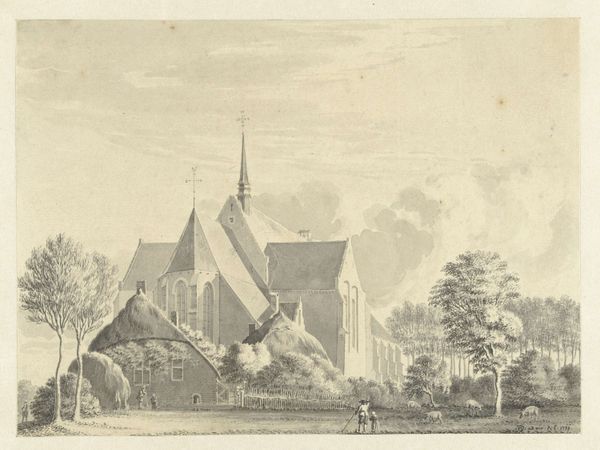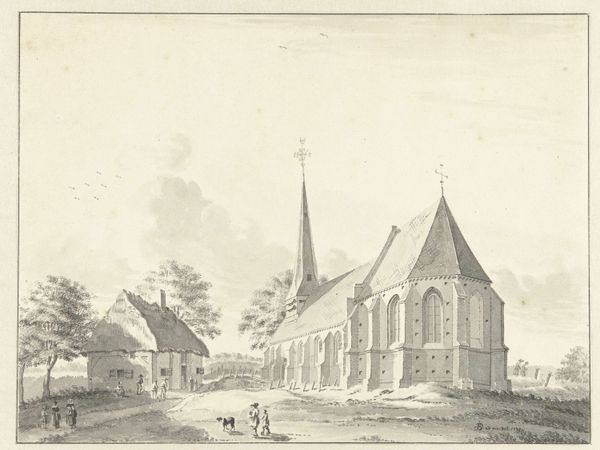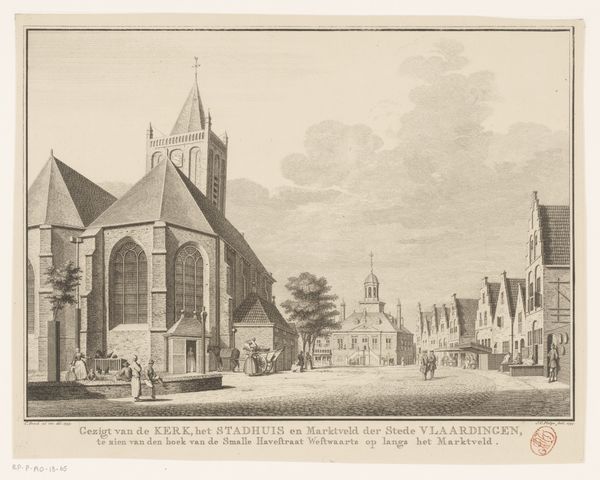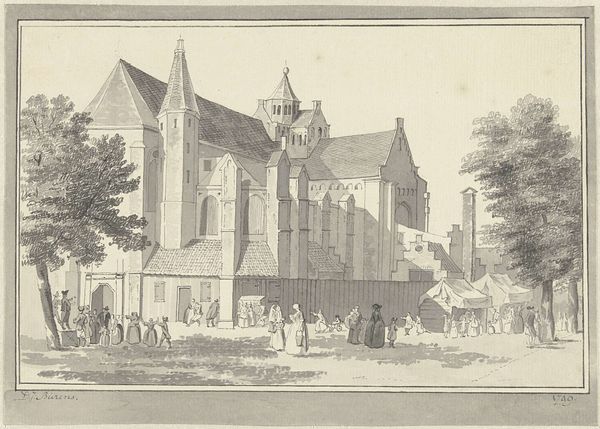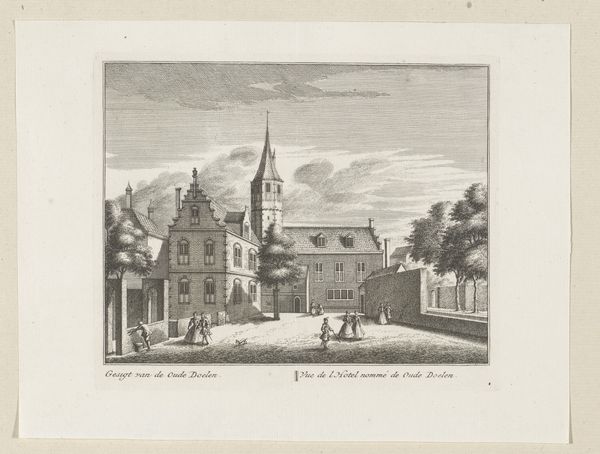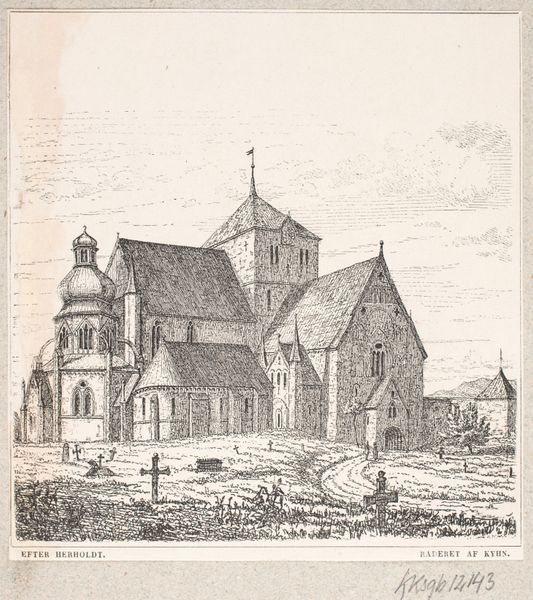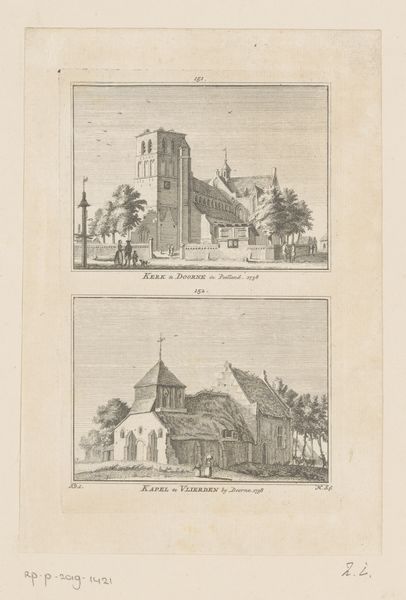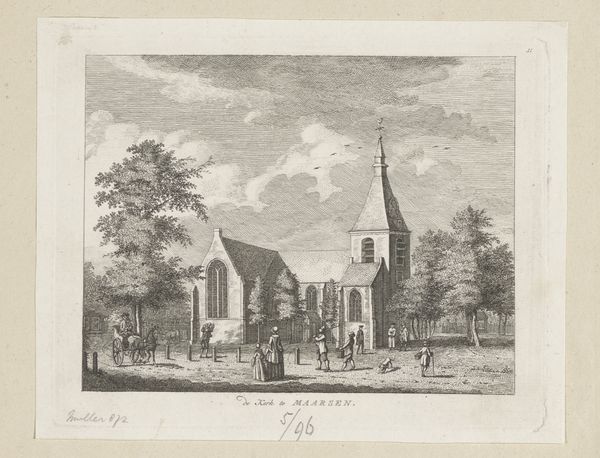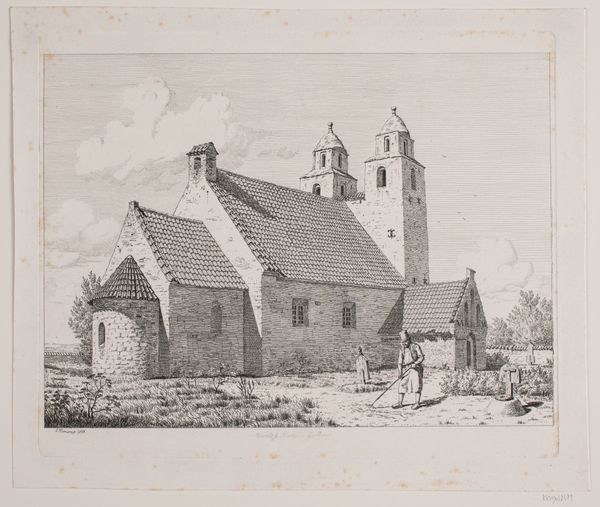
drawing, print, paper, engraving
#
drawing
#
baroque
# print
#
landscape
#
paper
#
cityscape
#
engraving
Dimensions: height 89 mm, width 124 mm
Copyright: Rijks Museum: Open Domain
Curator: This is “View of the Church of Poortugaal,” an engraving on paper by Hendrik Spilman, dating back to around 1750. It's currently held here at the Rijksmuseum. Editor: It's strikingly serene, isn’t it? Almost idealized. The fine lines of the engraving give everything a soft, diffused quality, despite the rigid architectural structure of the church. Curator: Absolutely. Consider how such images functioned within the burgeoning print market of the 18th century. The proliferation of printed images like this provided visual access to places and spaces, effectively shaping ideas about local identity and regional significance. We're looking at not just a building, but the constructed visual rhetoric of place. Editor: Which raises a question about accessibility and representation. Who had the economic and social capital to commission, produce, and, most importantly, consume images like these? Did this idealization exclude the experiences of certain groups within the community? Curator: That’s a great point. This image likely circulated amongst a particular class, one invested in representing Poortugaal in a specific, possibly sanitized, way. The laborers depicted hint at the community’s working population, but the focus clearly favors the architecture and landscape, subtly reinforcing the power structures inherent in that gaze. The church, as a dominant social institution, becomes both subject and symbol. Editor: So, it becomes about reading not only what's included, like the detailed rendering of the Baroque-style architecture, but also what remains unsaid or unseen about the everyday lives of all the villagers and their multiple truths. What power dynamics does the piece inadvertently reflect? Curator: Precisely. Looking through a lens that acknowledges class, and considering what might be marginalized or erased allows us a more complex interpretation of this seemingly straightforward depiction. Editor: It underscores the power of images to shape and cement dominant narratives, and the importance of questioning whose stories are being told. This conversation really opens up this little engraving to new interpretations. Curator: I agree completely. By acknowledging the power of art to reinforce social structures and exploring its hidden narratives, we can see this historical print not just as a view of a church, but as a cultural artifact ripe for social analysis.
Comments
No comments
Be the first to comment and join the conversation on the ultimate creative platform.
